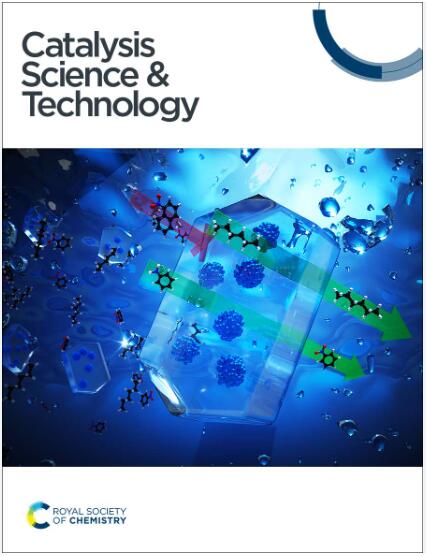先进的结构无定形Co@PAT电催化剂:灵活和可持续的三功能水氧化和太阳能到氢的转换为能源的未来†
IF 4.2
3区 化学
Q2 CHEMISTRY, PHYSICAL
引用次数: 0
摘要
开发基于过渡金属的高性能水氧化电催化剂(OER、UOR和海水裂解)对制氢至关重要。在此,我们提出了一种无溶剂无定形嵌钴富S, n碳(Co@PAT)电催化剂,通过聚合和自燃烧方法制备。在惰性表面上,活性电催化剂4R Co@PAT/GC在10 mA cm−2下表现出290 mV的低过电位,动力学小(96 mV dec−1),在1.0 M KOH下稳定性超过25 h,最小电位损失(~ 2%)。通常,涂覆在活性NF表面(4R Co@PAT/NF)上的4R Co@PAT在10 mA cm−2时的过电位为250 mV,动力学较小(40 mV dec−1),在1.0 M KOH中具有超过180小时的超耐久性,最小潜在损失约1.4%。这些理想的性能优于贵金属催化剂。以4R Co@PAT为阳极的全电池在10 mA cm - 2时表现出1.54 V的高稳定性,并具有超过240 h的高稳定性,潜在损耗为~ 2.53%。令人惊讶的是,4R Co@PAT/NF的效率在UOR (1.40 V;25 h)和海水(1.54 V;25 h)劈裂。在太阳能制氢过程中,1.53 V的太阳辐射能有效地分解水。总体而言,4R Co@PAT表现出优异的电催化活性,催化剂的无定形性质大大增强了灵活性,杂原子的整合显著提高了电催化活性,这为拓展多功能电催化剂的高产氢潜力提供了新的前景。本文章由计算机程序翻译,如有差异,请以英文原文为准。
Advanced-architecture amorphous Co@PAT electrocatalyst: flexible and sustainable tri-functional water oxidation and solar-to-hydrogen conversion for the energy future†
Developing high-performance electrocatalysts based on transition metals for water oxidation (OER, UOR and seawater splitting) is essential for H2 production. Herein, we present a solvent-free amorphous cobalt-embedded S,N-enriched carbon (Co@PAT) electrocatalyst prepared by polymerization followed by an auto-combustion method. On an inert surface, the active electrocatalyst 4R Co@PAT/GC presents a low overpotential of 290 mV at 10 mA cm−2 with small kinetics (96 mV dec−1) and stability over 25 h with minimum loss of potential (∼2%) in 1.0 M KOH. Typically, 4R Co@PAT coated on an active NF surface (4R Co@PAT/NF) exhibits an overpotential of 250 mV at 10 mA cm−2 with smaller kinetics (40 mV dec−1) and ultra-durability over 180 h with minimum a potential loss of ∼1.4% in 1.0 M KOH. These ideal performances are superior to those of precious-metal catalysts. A full cell with 4R Co@PAT as the anode exhibited 1.54 V at 10 mA cm−2 and high stability for more than 240 h with a potential loss of ∼2.53%. Surprisingly, the efficiency of 4R Co@PAT/NF is retained in the UOR (1.40 V; 25 h) and seawater (1.54 V; 25 h) splitting. In solar-to-hydrogen production, 1.53 V solar radiation effectively splits water. Overall, the 4R Co@PAT exhibits superior electrocatalytic activity, with the amorphous nature of the catalyst greatly enhancing the flexibility and the integration of heteroatoms significantly boosting the electrocatalytic activity, which affords new prospects for the expansion of the high potential of multi-functional electrocatalysts for H2 generation.
求助全文
通过发布文献求助,成功后即可免费获取论文全文。
去求助
来源期刊

Catalysis Science & Technology
CHEMISTRY, PHYSICAL-
CiteScore
8.70
自引率
6.00%
发文量
587
审稿时长
1.5 months
期刊介绍:
A multidisciplinary journal focusing on cutting edge research across all fundamental science and technological aspects of catalysis.
Editor-in-chief: Bert Weckhuysen
Impact factor: 5.0
Time to first decision (peer reviewed only): 31 days
 求助内容:
求助内容: 应助结果提醒方式:
应助结果提醒方式:


